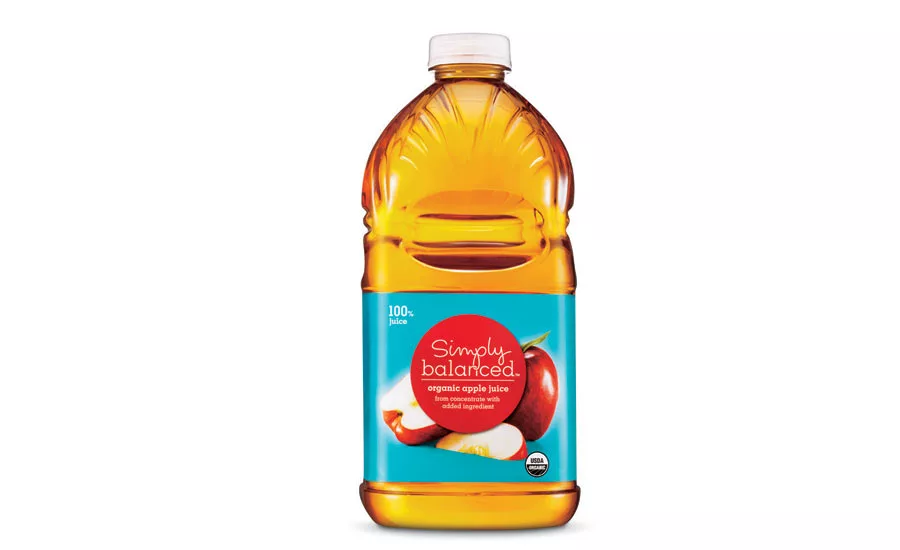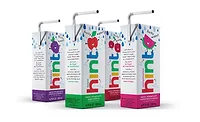Private label resonates as premium, value-focused
Category performance varies by channel

As the consumer packaged goods (CPG) market continues to influx with value-focused brands, more and more retailers are placing greater emphasis on their own brands, experts note. With steadily increasing sales, private-label CPGs are giving branded products a run for their money.
According to New York-based Beverage Marketing Corporation’s (BMC) October report titled “Private Label Beverages & Contract Packaging in the U.S.,” sales of private-label products of all types once again increased in 2017, reaching $122.3 billion, an increase of almost $3 billion from 2016, it states.
“Retailer private-label programs are taking off and transforming the CPG industry, providing consumers not only value, but also products that have high ethical, environmental and taste standards,” states Chicago-based Information Resources Inc.’s (IRI) November “Private Label” report.
This year, private-label dollar sales grew 5.8 percent, outpacing national brands and the overall CPG sector by 1.5 percent and 2.1 percent, respectively, the report says. Private label accounts for 16- to- 20 percent of CPG dollar spending across generations, it adds.
Unit sales increased 3.8 percent for private label, while national brands saw a 0.2 percent decline in unit volume, marking a 0.5 percent year-over-year gain in the CPG market, IRI data indicates.
(By segment)
| DOLLAR SALES | % CHANGE VS. PRIOR YEAR | |
| Bagged/loose-leaf tea | $90,344,229 | 4.5 |
| Canned and bottled tea | $61,055,368 | 10.7 |
| Convenience/PET still water | $2,825,623,678 | 10.0 |
| Energy drinks non-aspectic | $18,496,892 | -26.3 |
| Energy shots | $15,820,065 | 7.8 |
| Ground coffee | $439,232,361 | 9.2 |
| Premixed cocktails/coolers | $3,057,588 | 17.1 |
| Ready-to-drink cappuccinos/iced coffee | $51,086,700 | 38.3 |
| Refrigerated almond milk | $197,975,404 | 17.1 |
| Refrigerated coconut milk | $4,647,379 | 11.7 |
| Refrigerated kefir | $3,988,555 | -21.7 |
| Refrigerated soy milk | $35,598,021 | -7.7 |
| Seltzer/sparkling/mineral water | $536,719,935 | 9.% |
| Single-cup coffee | $878,435,406 | 11.2 |
| Single-cup tea | $2,057,693 | -37.9 |
| Spirits/liquor | $12,950,534 | 19.2 |
| Sports drinks non-aseptic | $10,494,675 | -37.6 |
Price matters
A key to the success of private-label products is getting consumers to view them as they would any other brand, experts note. Success in today’s private-label business now is attributed to product quality, distribution, capacity and price, whereas it was virtually all about the price in the past, BMC’s report states. “While price may be what draws consumers to the private-label brand, it is the quality and the value that will keep the consumer as a repeat purchaser,” it says.
Gary Hemphill, managing director of research at BMC, notes the pivotal role price plays in the category. “The primary reason people purchase private-label products is price,” he says. “Other factors like quality and packaging can contribute to the success or lack thereof of private-label products, but price is the primary reason.”
A common theme within the category is retailers implementing some sort of private-label program, which helps consumers view private-label products as they would any other brand. “Retailers with a successful private-label strategy treat their private-label products as brands and use traditional promotional tools to boost their sales,” BMC’s report says.
The research firm outlines popular tools implemented by successful private-label brands including in-store displays, on-package guarantees, compare-and-save signs and in-store sampling. For example, Cincinnati-based Kroger implemented a private-label program that now accounts for roughly 25 percent of all its sales, the report states.
IRI’s “Private Label” report echoes similar sentiments about why consumers and retailers are attracted to private-label programs.
For instance, Minneapolis-based Target Corp.'s private brand development allows the retailer the opportunity to drive differentiation, deliver unique experiences and build shopper loyalty, the research firm’s report says. It's key focus areas include an “expect more” brand promise and a “pay less” value element, it adds.
A niche category
With the continuous flood of products, consumers are becoming more aware of private-label brands. Many consumers today purchase private-label beverages with regularity, BMC’s report says. Private-label marketers also have gotten more sophisticated and products have begun to span most beverage categories, it adds.
When it comes to purchasing private label, the incidence can vary based on generation demographics. The following chart is a break down of consumers who expect to purchase more private label during the next six months with total population by generation.
| Millennials | 73% |
| Gen X | 71% |
| Boomers | 63% |
| Seniors | 54% |
Data from BMC and IRI indicates that the majority of private-label beverage brands experienced an increase in sales over the past year. “Today, the greatest growth opportunity is in niche categories, BMC’s report says. “Non-carbonated products, like bottled water, teas and fruit beverages, and other products with better margins have proliferated.
“Despite this trend toward niche categories, private label is the most developed in big brand categories, especially those with the weakest brand development,” it continues. “Carbonated soft drinks (CSDs), milks, bottled water and fruit beverages offer the greatest volume opportunities in private-label beverages.”
In total U.S. multi-outlets and convenience stores, private-label ready-to-drink (RTD) cappuccinos and iced coffee marked the highest increase, with a 38.3 percent change over the previous year for the 52 weeks ending Oct. 7, according to IRI data.
Similarly, convenience/PET still water and seltzer/sparkling/mineral water also marked an increase, each rising in dollar sales by 10 and 9.5 percent, respectively, over the previous year, based on IRI data.
As the data set points out, private-label performance diverges depending on category. “Private-label beverage performance varies drastically by category. For some categories like water, private label is outpacing the growth of the category,” BMC’s Hemphill says. “In [CSDs], private label is losing share.”
Although the private-label segment is growing, alcoholic drinks are unrepresented in the category, experts note. “Private-label alcohol has never developed as much as that of refreshment beverages and other non-alcoholic categories,” Hemphill says. “Alcohol marketers have done an effective job of creating brand loyalties that has had a limiting effect on private-label alcohol.”
Alcohol beverages like beer, wine and distilled spirits have minimal private-label sales and show little sign of having that change anytime soon, BMC’s report says. While brands are king in most of the non-alcohol categories, brand recognition is even more in demand in the alcohol categories, it adds.
Private-label wine, however, could be the exception, as the report notes that a small-business, wine shows the most promise within the private-label alcohol sector.
Premixed cocktails and coolers also are faring well, as this segment increased 17.1 percent compared with the previous year for the 52-week timeframe, ending Oct. 7.
The rise in consumable eCommerce also is motivating the rise of private-label categories, experts note. In fact, IRI attributes eCommerce as one of its main drivers.
“ECommerce private label sales are seeing explosive growth across food and beverage and non-food categories,” the market research firm’s report states. “The growth of eCommerce will also allow retailers to target shoppers in new markets and build trust in their private-label lines.”
Chicago-based Mintel also recognizes the impact that eCommerce has had on the private-label market, particularly among the millennial generation. “Shoppers in all age groups are likely to express interest in store brands that offer quality equal to name brands at lower prices, but younger shoppers are more likely than their older counterparts to gravitate to other, potentially more differentiating concepts, such as store-brand loyalty programs …,” the market research firm says in its January “Private Label Food and Drink Trends – US” report.
IRI data indicates similar findings as 73 percent of millennials in its Consumer Connect Survey Q3 2018, said they expect to purchase more private-label products during the next six months. Other consumer classifications in the survey concluded that 71 percent of Generation X, 63 percent of baby boomers and 54 percent of seniors/the silent generation are expecting to do the same.
“In the future, [experts] expect continued mixed performance across private-label categories, which will vary by retailer and channel,” BMC’s Hemphill says. BI
Looking for a reprint of this article?
From high-res PDFs to custom plaques, order your copy today!






